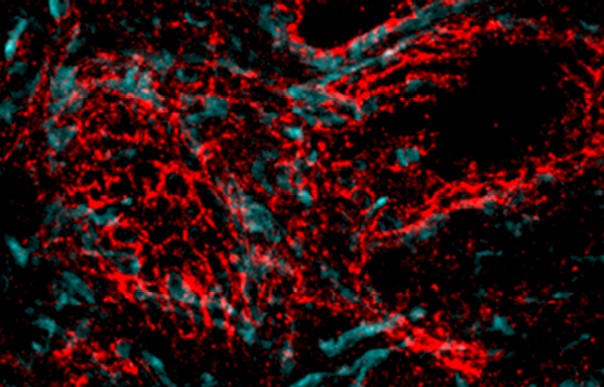
Molecular and Cellular Neuroscience, November 2013
Modulation of semaphorin3A in perineuronal nets during structural plasticity
Carulli Daniela, Foscarin Simona, Faralli Alessio, Pajaj Ermira, Rossi Ferdinando
Department of Neuroscience, Neuroscience Institute of Turin (NIT), University of Turin, Turin, Italy
Neuroscience Institute of the Cavalieri-Ottolenghi Foundation (NICO), University of Turin, Turin, Italy
In the adult central nervous system subsets of neurons are enwrapped by densely organized extracellular matrix structures, called perineuronal nets (PNNs). PNNs are formed at the end of critical periods and contribute to synapse stabilization. Enzymatic degragation of PNNs or genetic deletion of specific PNN components lead to the prolongation of the plasticity period.
PNNs consist of extracellular matrix molecules, including chondroitin sulfate proteoglycans, hyaluronan, tenascins and link proteins. It has been recently shown that the chemorepulsive axon guidance protein semaphorin3A (Sema3A) is also a constituent of PNNs, binding with high affinity to the sugar chains of chondroitin sulfate proteoglycans. To elucidate whether the expression of Sema3A is modified in parallel with structural plasticity in the adult CNS, we examined Sema3A expression in the deep cerebellar nuclei of the adult mouse in a number of conditions associated with structural reorganization of the local connectivity.
We found that Sema3A in PNNs is reduced during enhanced neuritic remodeling, in both physiological and injury-induced conditions. Moreover, we provide evidence that Sema3A is tightly associated with Purkinje axons and their terminals and its amount in the PNNs is related to Purkinje cell innervation of DCN neurons, but not to glutamatergic inputs.
On the whole these data suggest that Sema3A may contribute to the growth-inhibitory properties of PNNs and Purkinje neurons may directly control their specific connection pattern through the release and capture of this guidance cue in the specialized ECM that surrounds their terminals.







